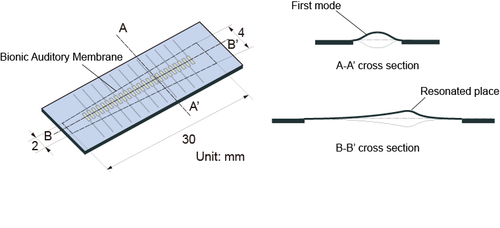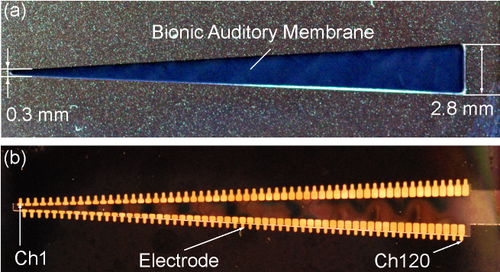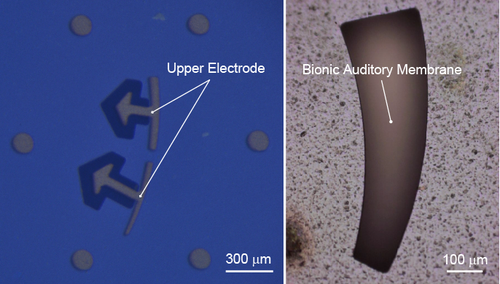Osaka University
Graduate School of Engineering Science
Kawano
Laboratory
MEMS Artificial Cochlea
Hearing loss is a functional disorder, and can be categorized by conductive hearing loss and sensorineural hearing loss. Conductive hearing loss happens when there is a mechanical problem in the middle ear, and sound is not conducted efficiently. Sensorineural hearing loss occurs when there is damage to the inner ear, especially the hair cells or the auditory nerve. Around 50% of people over 65-year-old have this type of hearing loss and it is permanent disorder, so it is important to conduct research to cope with it in our aging society. Also hereditary hearing loss, which is the most frequently observed hereditary disability, one out of every 1000 babies, can be mostly categorized to sensorineural hearing loss. Hereditary hearing loss affects greatly to the children especially in terms of acquiring language and knowledge, and their Quality of Life can be deteriorated. There is a growing need for development of an effective and safety treatment.
We have been conducting a research project on development of a novel cochlear prosthesis under the support of a Grant-in-Aid for Research on Sensory and Communicative Disorders from the Japanese Ministry of Health, Labor and Welfare (PI is Prof. Juichi Ito, Kyoto University). The ultimate goal of the project is to realize a fully implantable and self-contained prosthesis. We have developed a MEMS-based acoustic sensor (BAM: Bionic Auditory Membrane) that realizes frequency selectivity and acoustic/electric conversion without external energy supply. BAM is designed by mimicking the geometry of a basilar membrane in an inner ear to contribute to "natural hearing", since it analyzes sound by similar manner with biological system. The applicability of the cochlear prosthesis based on BAM has been evaluated by animal tests.
 |
Figure 1 Schematic of prototype bionic auditory membrane (prototype BAM) with multi electrodes, and cross-sectional images of BAM's oscillations on A-A' and on B-B'. Frequency selectivity is realized by the resonance in the local place. The local resonant frequency is mainly determined by the first mode for width direction due to the relatively long and narrow structure. |
 |
Figure 2 Photographs of (a) geometry of 2nd-generation BAM and (b) that with 120 electrodes. BAM has about twenty times higher efficiency of acoustic/electric conversion than that of prototype BAM; this high efficiency is achieved by a thin-film technology. BAM is made of 480 nm thick polyvinylidene fluoride trifluoroethylene (P(VDF-TrFE)) for piezoelectric material and 7.1 mm elastic layers including Si, SiO2, Pt and Au thin films. |
 |
Figure 3 Photographs of electrodes and geometry of miniaturized BAM for implantation into a cochlea of a guinea pig. The geometry of miniaturized BAM is designed to fit the implanting place of scala tympani near the basal turn. The width changes from 100 mm to 230 mm to adapt the resonant frequency in the range of 16 kHz - 32 kHz which corresponds to the characteristic frequency of implanting place. |
| You can see details in: |
Takatoshi INAOKA, Hirofumi SHINTAKU, Takayuki NAKAGAWA, Satoyuki KAWANO, Hideaki OGITA, Tatsunori SAKAMOTO, Shinji HAMANISHI, Hiroshi WADA, and Juichi ITO Piezoelectric Materials Mimic the Function of the Cochlear Sensory Epithelium Proc. Natl. Acad. Sci. USA, Vol. 108, No. 45 (2011), pp. 18390-18395. |
Hirofumi SHINTAKU,Takayuki NAKAGAWA, Dai KITAGAWA, Harto TANUJAYA, Satoyuki KAWANO, and Juichi ITO Development of Piezoelectric Acoustic Sensor with Frequency Selectivity for Artificial Cochlea Sensors and Actuators A: Physical, Vol. 158, Issue 2 (2010), pp. 183-192. |